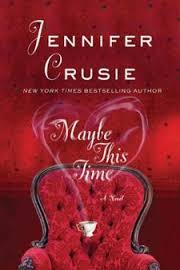I found this book after reading a thought-provoking article by Ruth Whippman in the March 2017 issue of Good Housekeeping magazine, which focused on the importance of adult friendships and how difficult they can be to form. You can read that full article here: http://www.goodhousekeeping.com/life/relationships/a42903/ruth-whippman-i-didnt-have-any-friends/

“It seems as though happiness in America has become the over-achiever’s ultimate trophy. A modern trump card, it outranks professional achievement and social success, family, friendship, and even love. Its invocation deftly minimizes others achievements (‘Well, I suppose she has the perfect job and a gorgeous husband, but is she really happy?’) and takes the shine off our own. Part of this is that Americans seem to have a deep cultural aversion to negativity. This can be a welcome change, but the pressure to remain positive at all times often results in some complicated mental gymnastics.” 3-4
In her much talked about book, America the Anxious, Ruth Whippman — a UK transplant to California — presents the idea that relentlessly pursuing a state of blissful happiness actually has the exact opposite effect: making happiness seekers anxious, depressed, and, well, unhappy. Whippman presents — with humor, not rancor — the other side of the happiness coin: namely, how ridiculous and evasive things such as mindfulness, empowerment, self-actualization, and other tenets of the “happiness movement” can be when studied closely; and how pursuing happiness at the expense of all other things results in eliminating the very euphoria a seeker hopes to achieve.
Focusing on a wide range of areas in our lives where were can find happiness (or not find it), such as in marriage, parenting, work, religion, online, and through self discovery, Whippman presents her view that despite all of their talk about happiness, Americans are miserable. The deeper her research takes her into the study of happiness, the more the author finds that sometimes the very things that make us happy often are simultaneously making us unhappy as well.
In the early chapters of the book, the author presents a highly cynical and hyperbolic view of the way in which some Americans pursue a happier life. The discussions of self-help methods and happiness at work are decidedly one-sided and occasionally condescending, and there is definitely an air about her research that suggests she may have drawn her conclusions first and then sought out extreme, insincere examples that prove her point often at the exclusion of much simpler examples that might not have supported her theory.
As the book progresses, though, Whippman’s examples begin to even out, and her discussions on the effect that parenting, religion, and social media have on personal happiness are approached in a much more even-handed manner and as a result introduce readers to some fascinating ideas. For example, her thoughts on whether the modern approach to parenting may be making our children mildly happier (and only in the moment) while making parents utterly miserable are definitely worth discussing. As is her conclusion that the role that religion plays on happiness may be much more about social connection and relationships than about any one individual’s spirituality. I also whole-heartedly agree with her argument that Facebook is making everyone unhappy, so much so that I have never joined, nor will I ever join, the site.
“Happiness is the currency of social media and the loophole in the generally accepted no-bragging rule. This is social media’s basic Faustian pact: you believe my Facebook fiction (and allow it to make you slightly envious and insecure) and I’ll do the same for yours.” 167
Overall the book brings to light some interesting new perspectives on the search for happiness, and the author’s sense of humor lends a much needed levity to the book, which otherwise could have taken a rather somber tone since much of her research has an air of “we’re all doomed.” The truth remains that there is good advice out there for being happier: advice that is easy, practical, and logical assuming you make an attempt to unearth it. The author truly seems to struggle with the fact that she needs to look outward for answers about how to be happier and less lonely; that simply just “being happy” is not always possible. Despite her distress at having to search so hard for answers, the truth is that sometimes, we all need help finding ways to be happier. And yet, we need at times to stop taking our search for happiness so damn seriously.
In reflection, I think the book is making an unspoken argument that anyone who claims to be happy is lying to themselves, lying to us, or both. I must disagree with this assumption as I am a very happy person. I am not pretending to be happy, nor am I crafting a facade of happiness to present to others, nor am I living in a state of denial or ignorance. Rather, I make the choice every day to be happy with my life and to enjoy it as it really is, even if it’s less than perfect…hell, even if it’s awful. In my personal experience, happiness is usually found in the dozens of everyday interactions and experiences we have — laughing at jokes our kids tell us, indulging in a wonderful book, sharing a glass of wine with your spouse on a sunny Friday evening — but perhaps we have grown a bit too busy and weary to recognize those events as “happiness.” It is inaccurate to portray people who seek out gaining more happy experiences as selfish or out-of touch, gullible fools racing off to spend their money to be told by a phony self-help guru that there is only one path toward happiness. It may be better to look to those people who want a lighter and more cheerful life and see individuals who are trying to be as happy as they can be given the current circumstances of their lives.
When my husband and I were very young and newly married, we found ourselves 3,000 miles from home with absolutely no money, living in a depressingly tiny apartment with sketchy neighbors…but we were ridiculously happy! We had each other, we were starting our life together. We lived in a lovely little town filled with free things to do, lots of other poor students to befriend, and plentiful amounts of cheap wine sold at the Trader Joe’s. By choosing to focus on the wealth of things we did have, not the thousands of things we did not (like a bed or a TV or jobs), we were able to build a day-to-day life together that was fulfilling and happy. That approach to life has served us well and we continue to feel happy and grateful every single day, no matter what challenges we may be facing.
“If we genuinely want to build a happy society, we need a shift in thinking, and acceptance that happiness cannot be achieved by emotionally cloistering ourselves, that it needs other people to flourish. We need to think of well-bring as a shared responsibility, rather than a personal quest, and to develop a discourse of happiness that engages with other people’s problems rather than dismisses them.” 218
END NOTE
As I have written on this blog many times, I am a devoted fan of Gretchen Rubin and her writing about happiness. As much as I love what Rubin has to say about the subject, it can be refreshing, and indeed important, to consider the arguments made against those put forth by my favorite happiness expert. While Whippman’s book is very insightful, it at times presents an oversimplified and overly cynical view of the search for happiness. The author calls much attention to self-help experts who are out to make themselves rich selling Americans a bunch of grandiose, “pseudo-Buddhist,” nonsense. I feel Whippman has unfairly lumped Gretchen Rubin* in with those people and I feel a need to offer a Gretchen Rubin-related rebuttal. In the end, Rubin argues for many, many of the same things that Whippman does: happiness comes from a more connected, attached, and engaged life; happiness intrinsically tied to having uplifting experiences with family, friends, acquaintances; that life experiences (like parenting) can make us happy and unhappy all at once. Rubin offers ideas for a happier life that are often free; that involve strengthening bonds with friends and strangers; that ask us to celebrate the small moments of happiness that come our way; and none of her ideas require that we toss all our belongings or go on pricey silent meditation retreats. (Side note: readers do not even need to buy her books, since her blog and podcast offer all of the same advice completely for free.)
*Who, I feel I have to add, Whippman singles out, by name, six times in the book.









